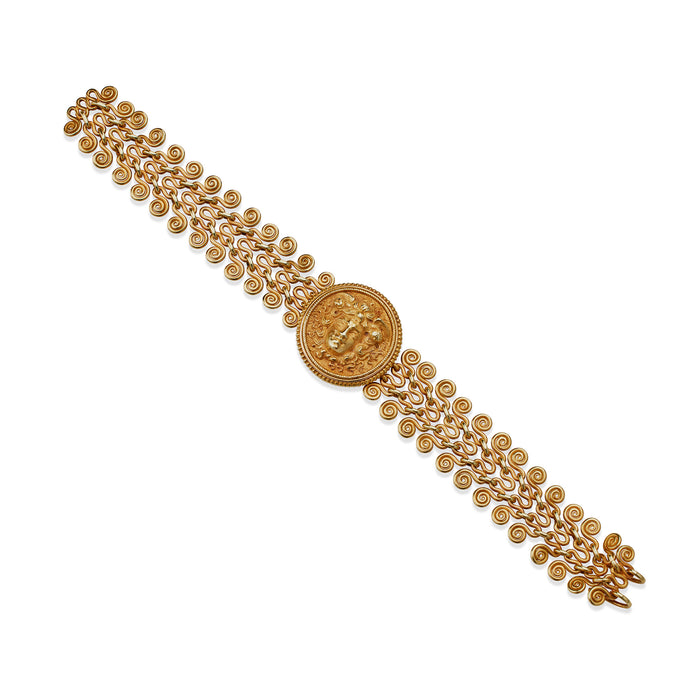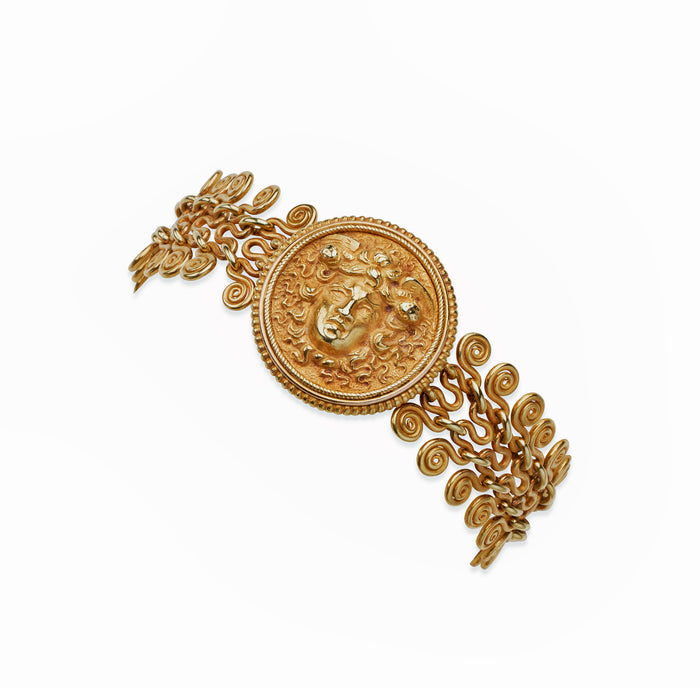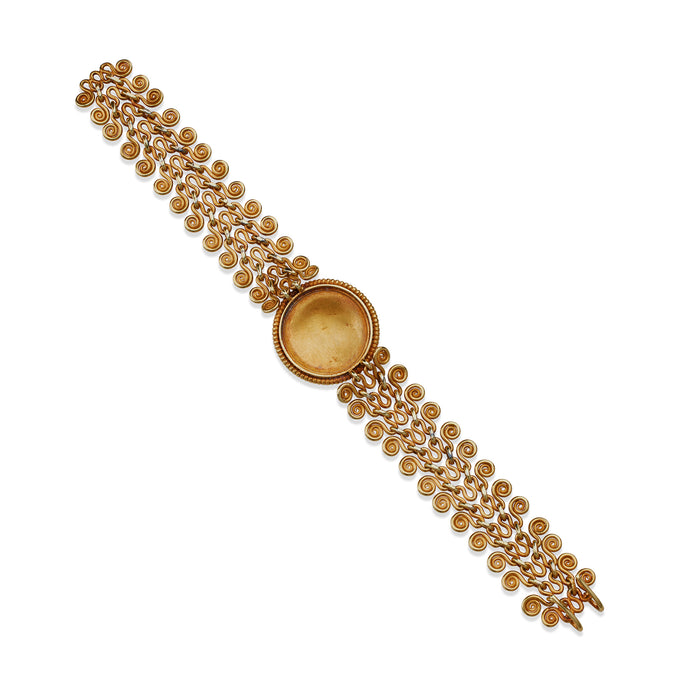
Archaeological Revival 22K Gold Winged Medusa Bracelet
$4,500
Created circa 1870, this 22K gold bracelet belongs to the archaeological revival style of jewelry. It is designed as spiraling gold wirework links after prehistoric bronze models joined by interlocking meander motif loops, centering a high relief medallion depicting a winged Medusa with double serpent heads, encircled by her floating locks, within a wirework frame, and completed by an integral double hook clasp. Handmade using ancient techniques, this fascinating work unites history, archaeological discovery, and creativity in an original, wearable bracelet by a skilled goldsmith.
- Product Details
- Curator's Notes
Item #: BA-21424
Artist: Antique
Circa: 1870
Materials: 22K Gold
Literature: For an archaeological revival bracelet made incorporating this style of wirework and interwoven meander links, see Castellani and Archeological Revival Jewelry, Stephanie Walker, ed., p. 69/
This antique bracelet combines styles from two ancient periods, the Greek classical period and the Bronze Age. This portrayal of Medusa as a "beautiful gorgoneion" dates from a later stage in her mythology. Earlier, in the Archaic period, she had been predominantly depicted as a monster with talismanic powers. By the 5th century B.C., Greek portrayals of Medusa gradually became more humanized, as the poetic focus of her story shifted to the tragedy of her victimization by Poseidon, Athena, and Perseus. This bracelet's depiction of the Gorgon more closely resembles that of the Rondanini Medusa, a large marble Roman era carving based on a Greek 5th or 4th century B.C. antecedent by an Athenian master, possibly in the circle of Phidias. During 19th century Europe, the Rondanini Medusa was associated with heroic resistance against oppression.
Meanwhile, the spiraling wirework links derive from archaeological discoveries dating from pre-historic Europe. The discovery of bronze and its multiple, transformative uses by prehistoric peoples had liberated them to make advances in many fields, from language to agriculture to art. Bronze age ornaments, often in the form of diadems or fibulae used for pinning cloaks on the body, were found in Bronze Age burials. It is speculated that the spiraling wirework, which appears in burials worldwide, even among peoples that were not in contact with each other, were a natural result of human experimentation in the medium.
Archeological revival jewelers rarely ventured to create jewelry inspired by pre-historic motifs. Among this group of jewelers, only Castellani and Robert Phillips of London are known to have produced work with such spirals, with Castellani's existing known example, housed at the Museo Nazionale Etrusco di Villa Giulia, Rome, is made in silver.


